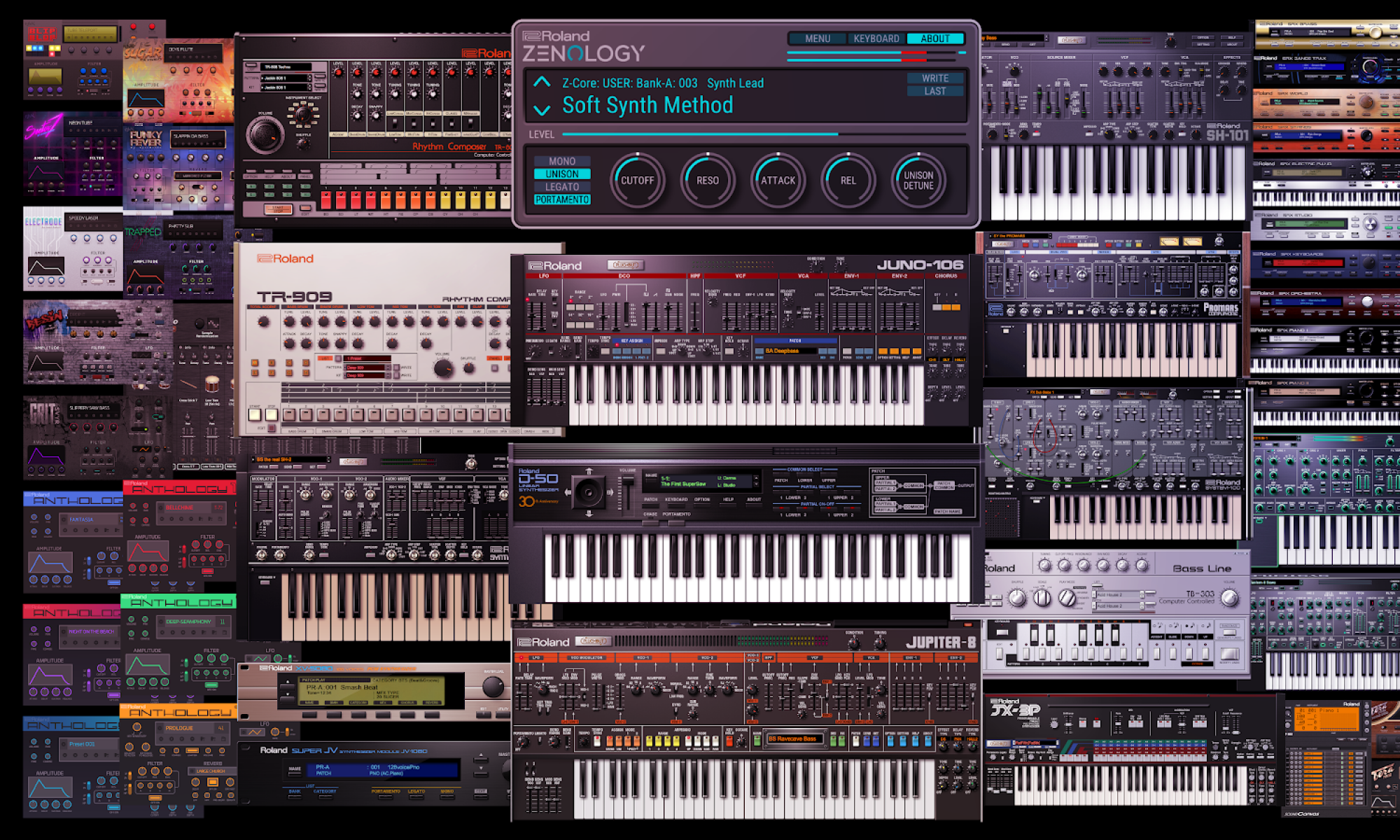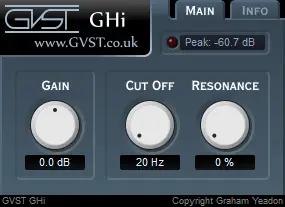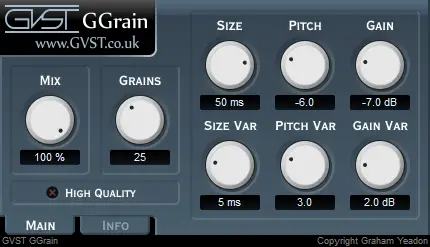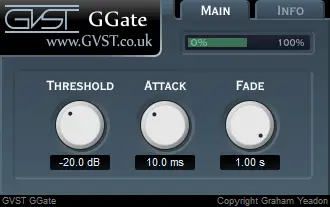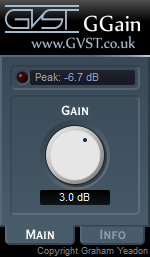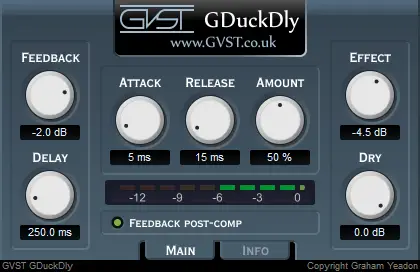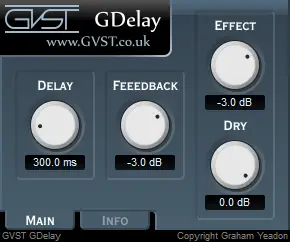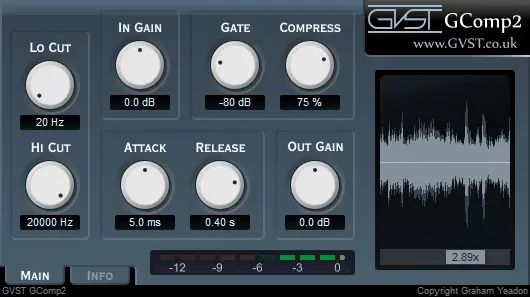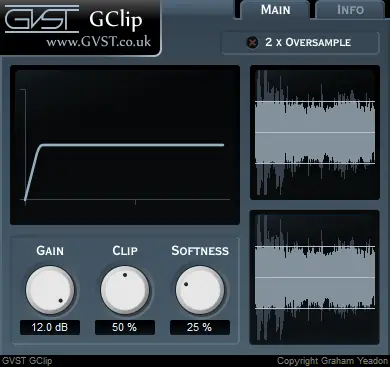GHi is a free filter VST plugin developed by GVST. Compatible OS(s): Windows 64b, macOS, Linux.
GHi is a resonant high-pass filter. It is used to remove all frequencies from a signal below a given cut-off point.
Increasing the resonance of the filter causes the frequencies around the cut-off to be boosted.
Resonance can create large peaks in the output. Because of this, the GUI features a peak display showing the maximum peak output level. The peak display is reset by clicking on it.
High-pass filters are especially useful for removing unwanted or inaudible bass frequencies. In a mix, you usually want the bass to come from one or two specific tracks. Removing the bass from the other tracks can make mixing easier and help eliminate “mud” from the final mix.
http://www.gvst.co.uk/
